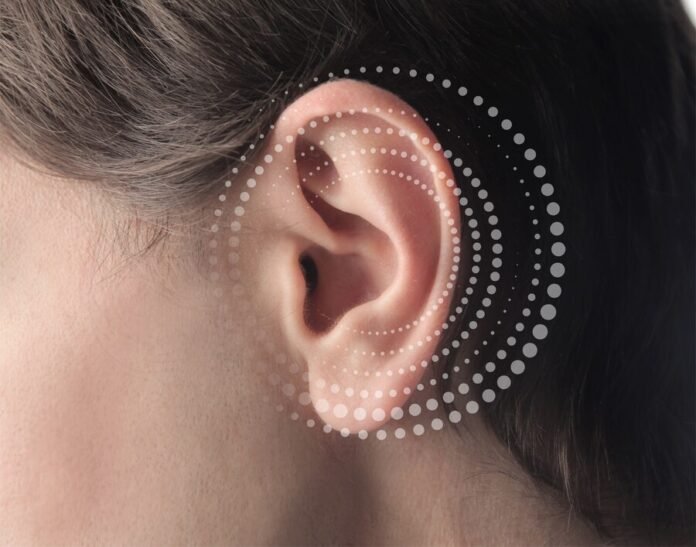The ear is one of the 5 sense organs of the body and thus it is a sensitive organ of the body. It is used for identification, transaction and conversion of forms of the sound. A further critical job that the human ear does is maintaining balance.
In this article we will be discussing the structure and function of the ear.
Definition:
Ear is one of the sensory organs which makes us able to hear. It does not help in only hearing but simultaneously it helps to maintain the balance of the body as well.
Structure of the Ear
There are 3 parts of the ear:
- External Ear
- Middle Ear
- Inner Ear
All these 3 parts of the ear are explained below
External Ear :
This is the outer part of the year and it is quite visible with the naked eye. It is further divided into three types
i. Auricle(Pinna): The pinna is made up of a thin layer of cartilage which is elastic in nature and covered by the layer of the skin. Its structure is very similar to a funnel which helps to collect the sound and helps to send the sound in the middle ear. The lobule of the pinna is made up of adipose and fibrous tissues with the blood capillaries inside it.
ii. The Ear Canal : It is a canal which is slightly curved in nature and is assisted
by bone anteriorly and by cartilage in its outer part. The ear canal is also called
external auditory meatus. It has a thin layer of stratified epithelium and wax glands.
iii.Ear Drum : It is also known as the tympanic membrane and this membrane
separates between the middle ear and the external ear. The function of this part is to
receiving and amplifying the sound waves.
Middle Ear
It connects the outer or external and internal part of the ear.
i. Tympanic Cavity:
It is the cavity which is situated between the outer and internal part of the ear. It is
separated from the external ear by tympanic membrane and with the help of bony wall
it is separated from the internal ear. It consists the eustachian tube which is known
auditory tube situated internally.
ii.Eustachian Tube
The length of the tube is 4 cm which helps to equalize the pressure on both the sides of
the eustachian tube.
iii.Ossicles
Transmission of the sound waves from the eardrum to the middle year is done by this
part of the ear. It also has three types:
a. Malleus : This ossicle can be considered as the largest, and it is hammered
shape in nature. A handle helps it to connect to the tympanic membrane and
with the help of incus it is attached to the head.
b.Incus : It is an ear ossicle which is anvil shaped in nature and connected to
stapes.
c. Stapes : This ossicle is the smallest and smallest bone in the body as well.
Inner Ear
It is the innermost part of the ear and consisting two types
i. Bony Labyrinth
This part of the ear consists few parts which are: a vestibule, three semi circular
canals and cochlea which are spiral in shape.
ii. Membranous Labyrinth
This part of the year is covered by a bony labyrinth. It is an important part as it has
some receptors which are sensitive and responsible for hearing and simultaneously for
the balance as well.Examples of sensory receptors include the ampullaris macula and
cristae, an organ of the cortex. The three semicircular ducts that make up the
endolymph-filled membrane labyrinths are the cochlear duct, saccule, and utricle
Function of Ear
As much as we have discussed till now, it is quite understood that the ear has mainly two functions which are hearing and balancing.
Hearing
There are few processes those are responsible for the mechanism for hearing or we can say
that there are some processes which make ear to hear and this processes are mentioned
below:
- The sound wave travels through the parts of the outer ear and reaches to the eardrum.
- The reached sound to the eardrum helps the eardrum to vibrate.
- The vibrations which are produced here go through the tympanic membrane and reach up to the tympanic cavity.
- The vibrations are picked up by the ear ossicles further and the stapes force the oval window to move in and out.
- This action further passes to an organ called corti, which acts as a receptor for hearing and it also has small hair cells which convert these vibrations into electrical impulse, and with the help of sensory nerves it passes to the brain.
Balance
There are some parts which are responsible for this function of the ear and those are
- Eustachian Tube and Vestibular Complex
Since the eustachian tube maintains the pressure thus it helps to balance and receptors which maintain the body balance are being kept by the vestibular complex.
Recommended Articles:
Amplitude Frequency Period Sound
Ampere’s Law | Definition, Application & Examples
Ampere: The Basics of Electrical Currents
Alpha Particles Mass
Process, Occurrence, Measured of Alpha Decay
There are three types of the ear which are external, middle and internal. Stapes is the smallest bone which contains the body which is a part of ossicles in the middle ear Hearing and maintaining the balance are the two important functions of the ear. The lobule of the pinna is made up of adipose and fibrous tissues. Anatomy of Human Ear FAQs
Mention all the parts of the ear.
Which is the smallest bone of the body?
What are the important functions of the ear?
What is the lobule of the pinna made up of?
